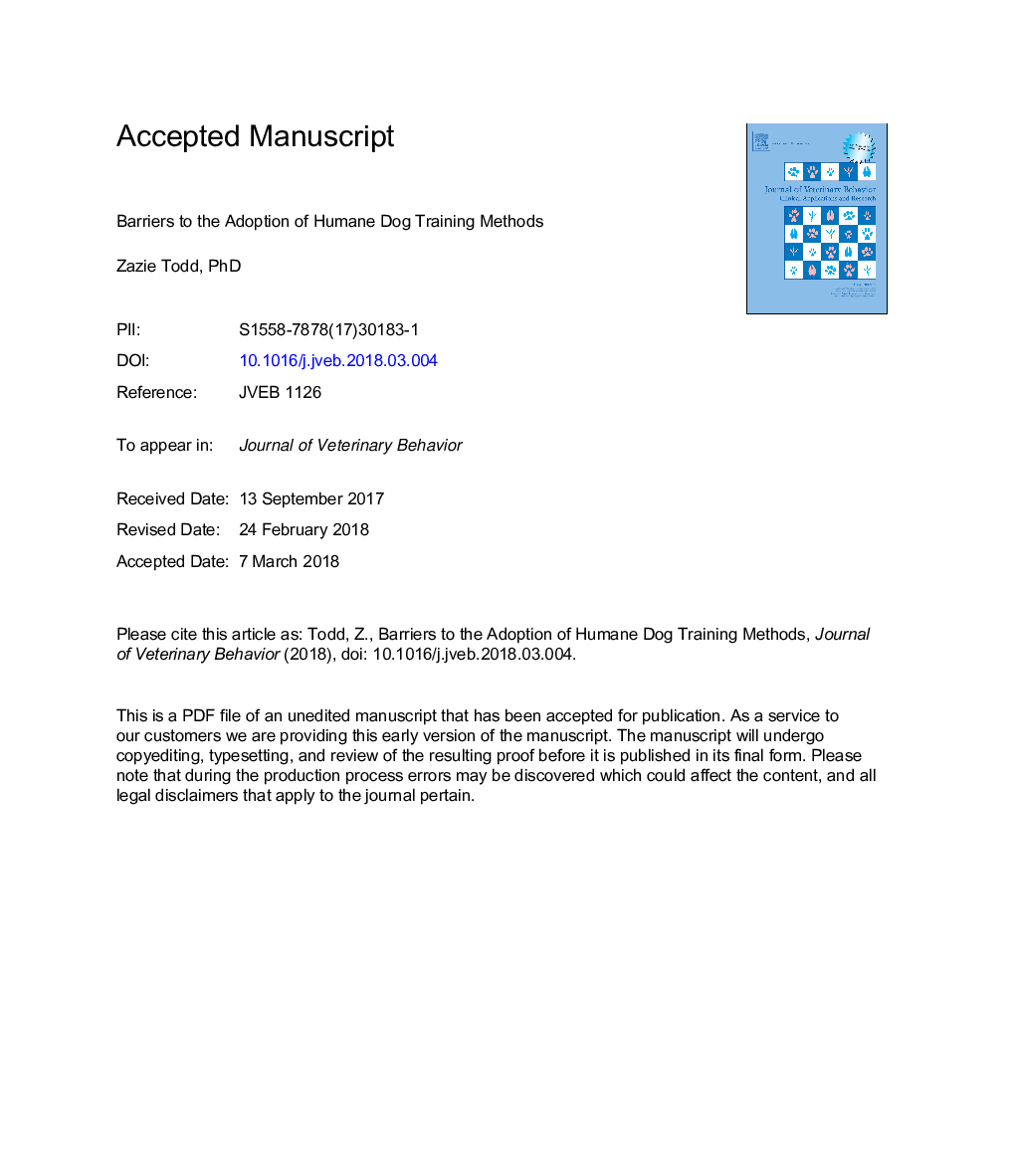| Article ID | Journal | Published Year | Pages | File Type |
|---|---|---|---|---|
| 8484070 | Journal of Veterinary Behavior: Clinical Applications and Research | 2018 | 22 Pages |
Abstract
The use of aversive dog training methods is associated with risks to animal welfare, yet most dog owners continue to use positive punishment and negative reinforcement at least some of the time. This study reviews the barriers to the adoption of humane dog training methods by the general public. Lack of knowledge of the welfare risks, the poor quality of much information available to dog owners (should they seek it out), lack of regulation of dog trainers, and theoretical and practical knowledge of dog training will all affect people's choice of method. The differing positions of animal behavior and veterinary organizations and dog trainers may contribute to the idea that there is a lack of consensus on appropriate methods. The reasoned action approach, which is one of the most extensively tested models in health promotion and psychology, is a promising way of understanding people's intentions and likelihood of using humane dog training methods. Suggestions for future research include developing an understanding of how perceived social norms link to dog training behavior and the best ways to teach humane dog training methods.
Related Topics
Life Sciences
Agricultural and Biological Sciences
Animal Science and Zoology
Authors
Zazie Todd,
